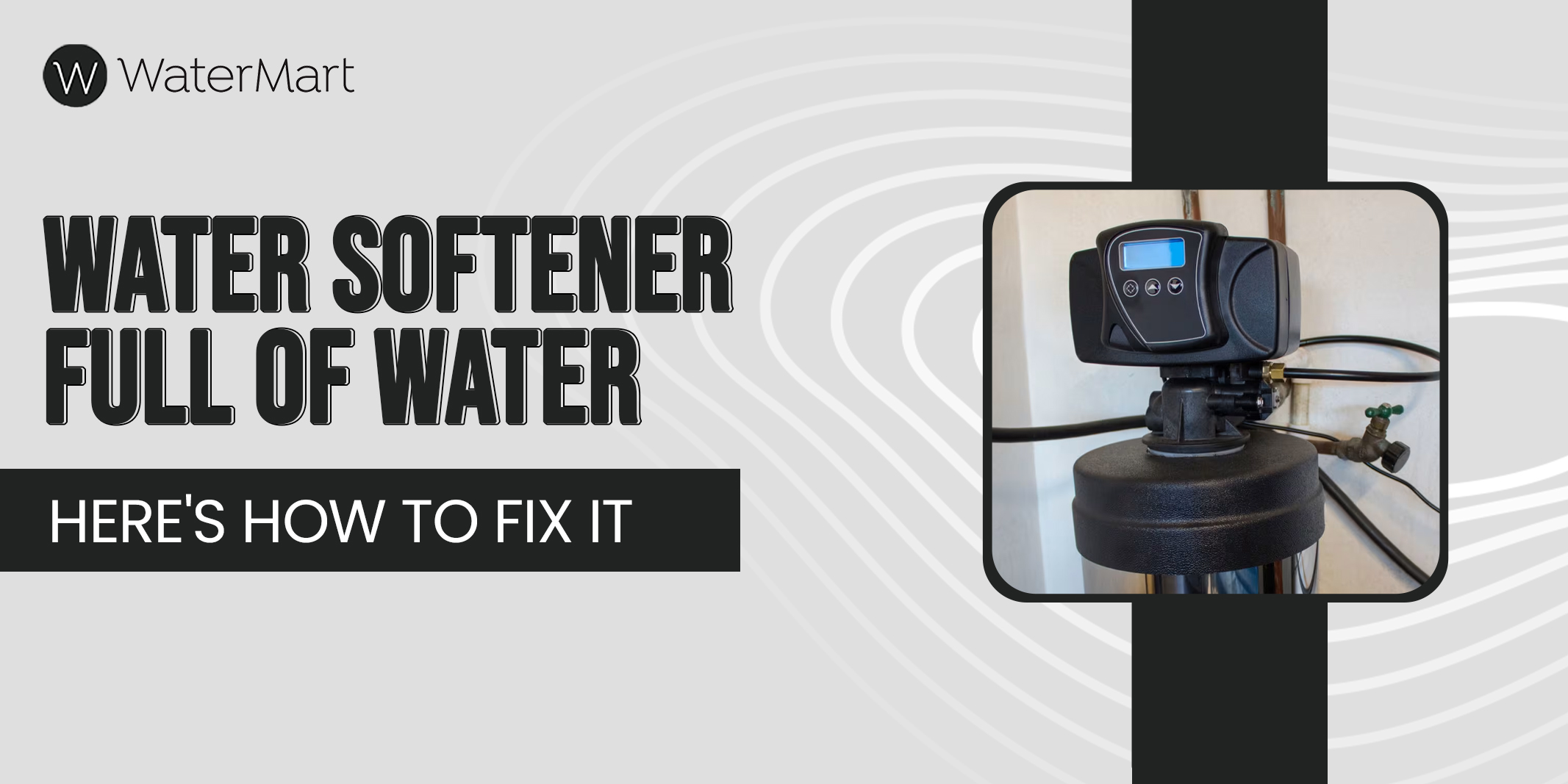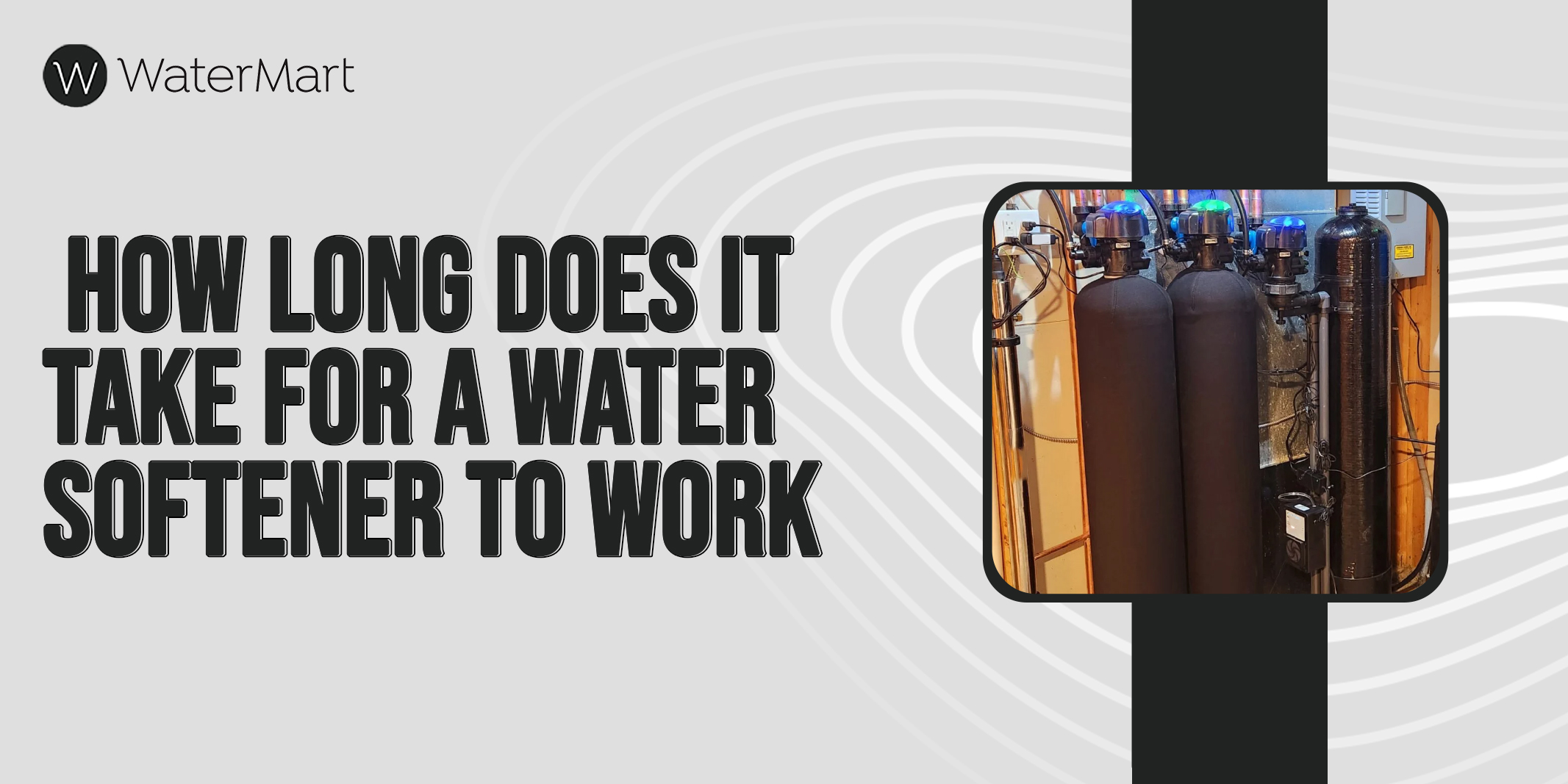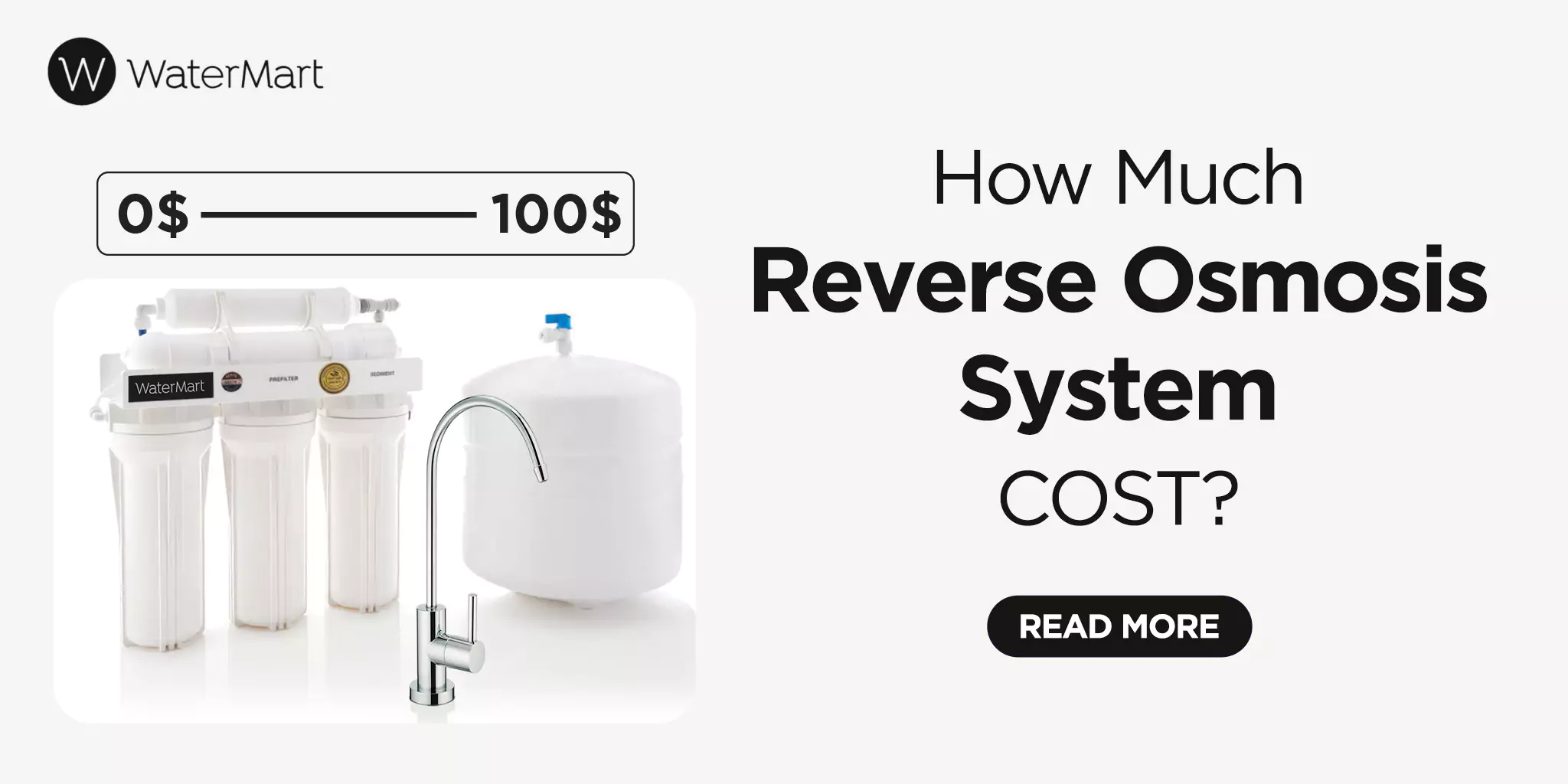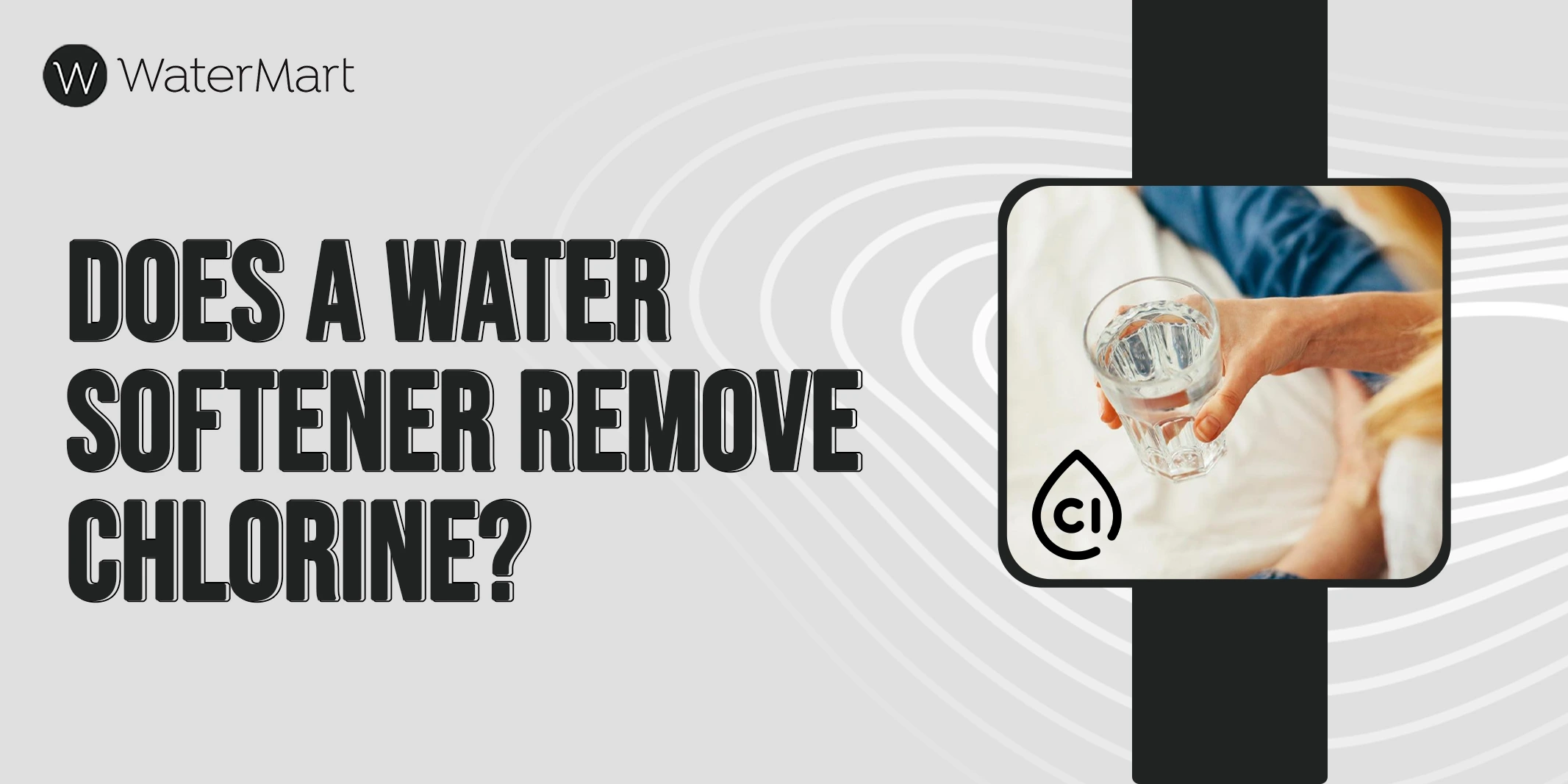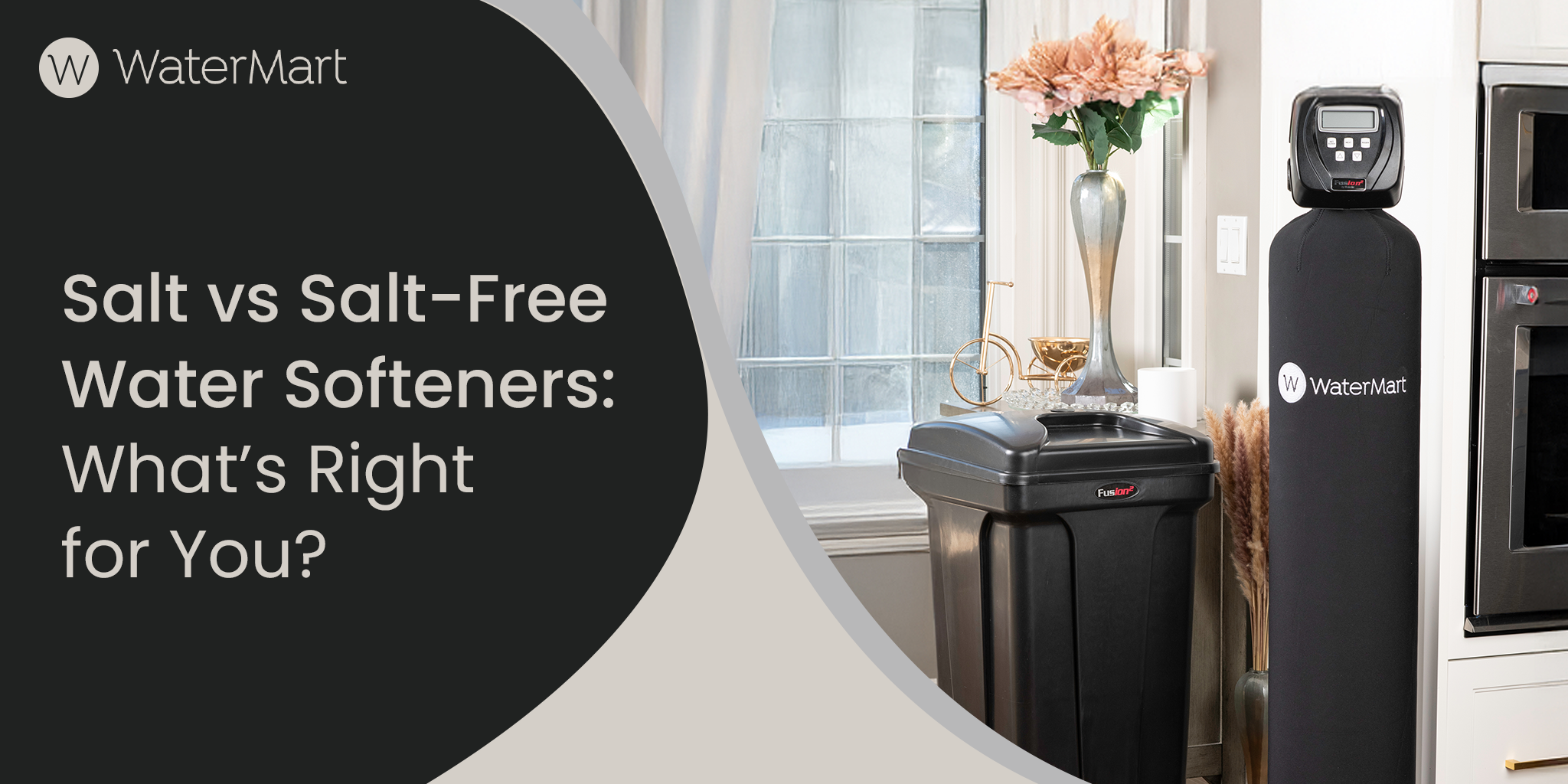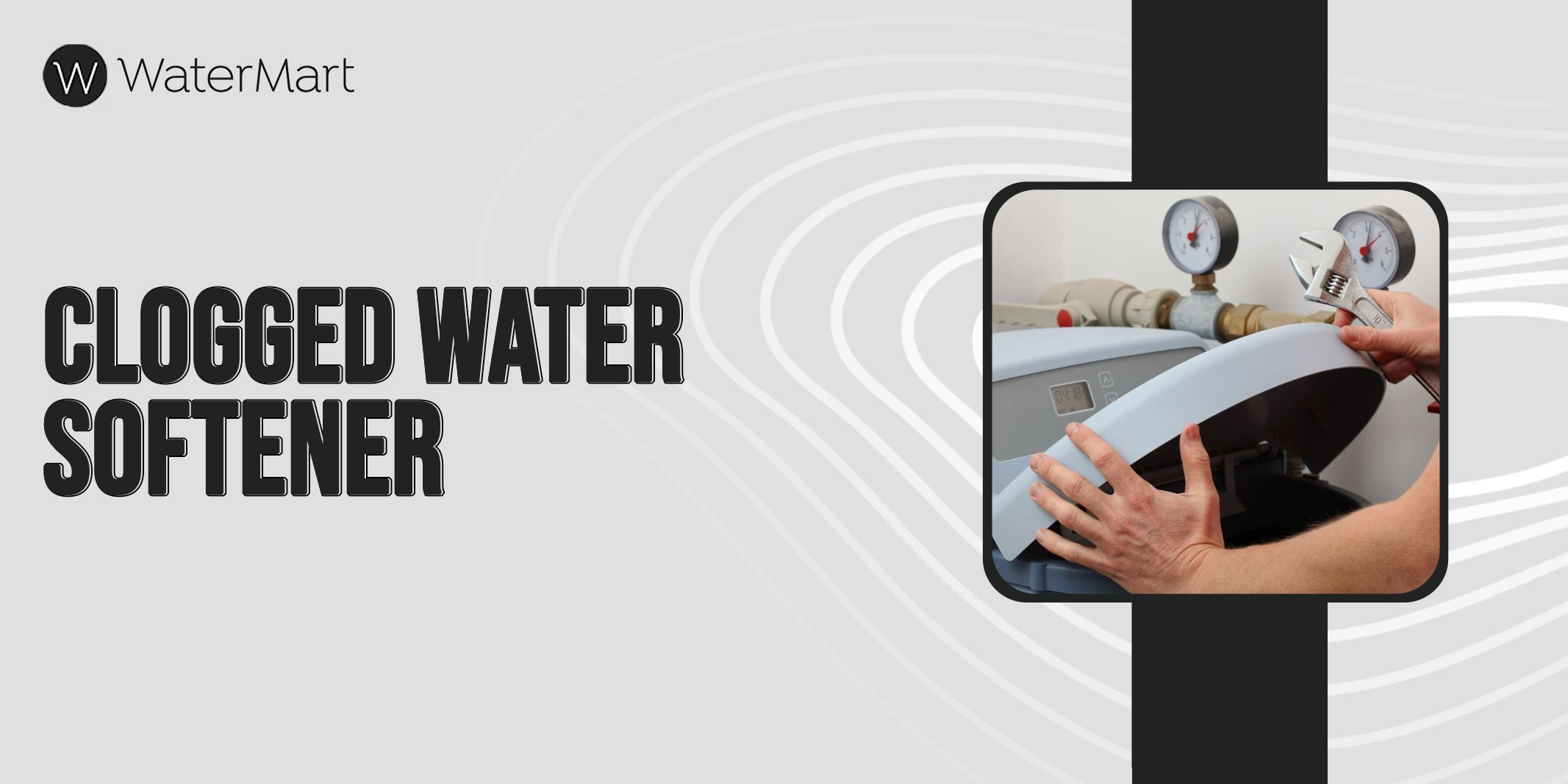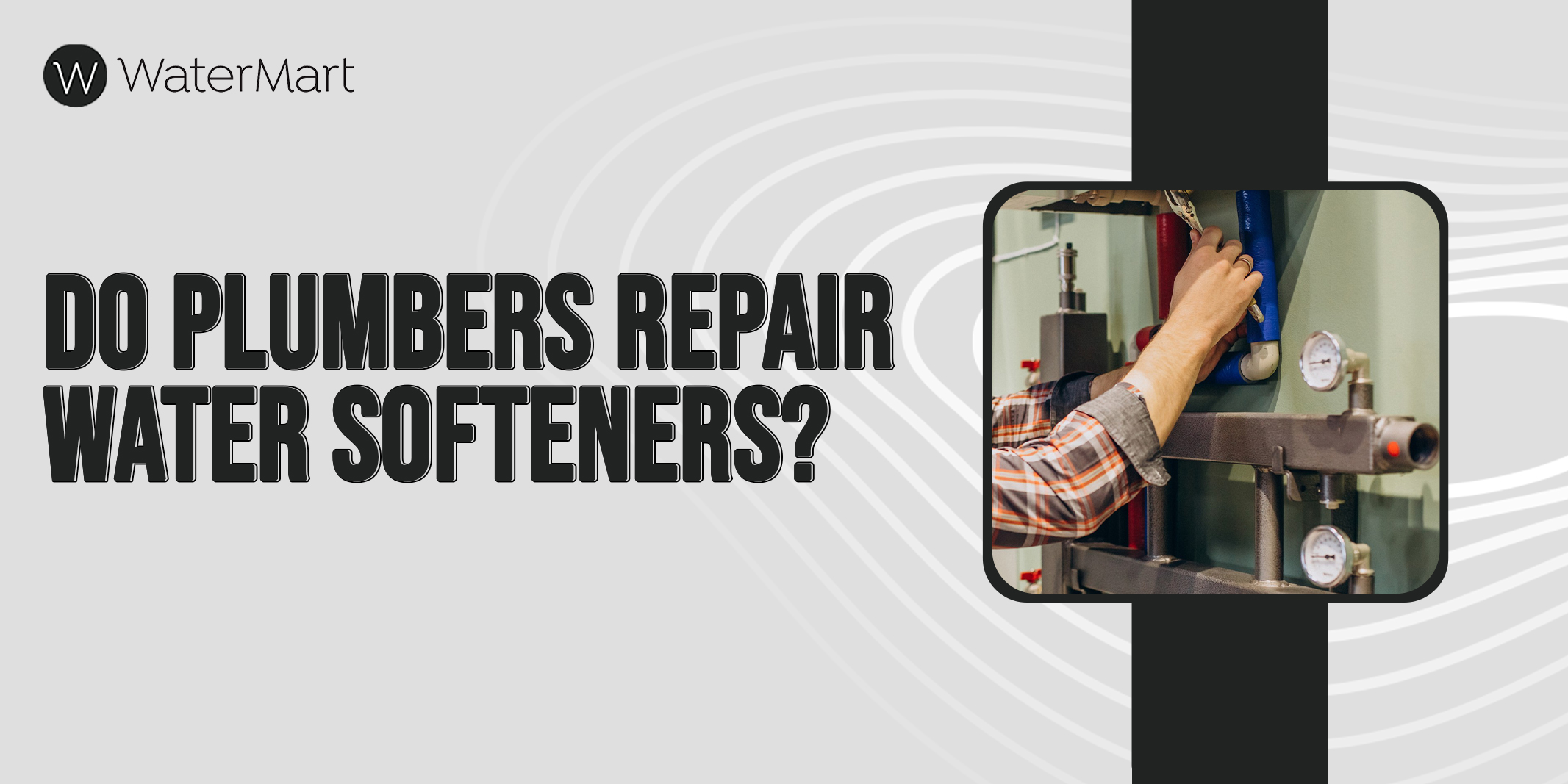Your cart is currently empty!
Water Softener Full Of Water: The Solutions?
Water softeners are a miracle cure for all the tiring limescale buildup and stubborn, filmy residue. But what if your water softening system itself begins to weep?
Water softener owners usually ask, “Why is my water softener tank full of water?” The answer to this question mainly narrows down to your brine tank.
The brine tank is the most important component of a water softening system. It holds the brine solution for regenerating resin beads and properly keeping your water softener functioning.
However, the brine tank sometimes gets abnormally high water levels and starts overflowing. Now, this could be because of various reasons.
This article will discuss what happens inside a brine tank and why it is important for water softening. Also, we’ll share reasons why your softener is full of water and provide viable solutions.
Stay with us!
Reasons Behind the Tank Getting Full of Water
Your water softener must drain water properly to keep your softening systems working.
Here are a few reasons why your water softener brine tank is full of water.
House Water Pressure
Each water softener comes with its own requirements, and the house water pressure is one of them. If your house water is too low or too high as per your water softener’s demands, adjust it accordingly to avoid overflowing of the water softener.
Clogged Injector/Venturi
The injector or Venturi is a small component in the water softener that creates a suction effect.
If the clogged injector is clogged, you might experience overflowing brine tank issues.
Malfunctioning Timer
The regeneration cycle of your water softener depends on the timer. Therefore, a malfunctioning timer disrupts the schedule, leading to a water softener or brine tank overflow.
Salt Mushing
Salt mushing refers to the undissolved salt left in your brine tank. The undissolved salt settles in the form of a dense layer at the bottom of your brine tank.
When the salt is mushed in your softener, it stops working properly and prevents the float from operating effectively, resulting in brine tank overflow.
Blockage In the Control Valve
A blocked control valve disturbs the overall balance of water flow in your water softener. It may cause regeneration or overflowing issues in your softener.
To unblock the control valve, follow the instruction manual or consult a water treatment expert.
How To Fix A Water Softener Tank Full of Water?
Suppose your water softener is full of water, and you’re running out of time to consult the specialists.
What would you do? Good news! We’ve got you all covered in this little guide that sheds light on how to fix standing water in a water softener salt tank.
Keep reading!
Know What You’re Looking At
First of all, before getting into technicalities, it’s important to understand the various components of a water softener and what they do.
-
Brine Tank:
Normally, when your softener overflows, the main reason behind it is the brine tank, which holds the brine solution for the regeneration cycle.
-
Control valve
It controls the water flow throughout your water softening system. For example, refilling the tank and using a salt solution for the regeneration cycle.
-
Resin tank
It is another tank in your softener that collects the hardness minerals, allowing you to turn soft water into hard water.
-
Float assembly
It prevents overflowing your brine tank by stopping water flow when it reaches its full capacity.
Check for Simple Problems
Now that we know the components of your water softening systems, it’s time to proceed with the fixes.
Some of the common, simpler problems are:
Water Pressure
To allow your water softener to work smoothly, the water pressure should be within the recommended range. High water pressure affects the regulation of water flow into the brine tank, which leads to overflow.
To resolve this, adjust the pressure according to your user manual’s recommendation or contact a professional to bring the pressure down.
Brine Line
Usually, the brine line is clogged or disconnected. It prevents the brine solution from reaching the main tank, resulting in overflow.
To fix this, straighten out the brine line and check for minor blockages. If the brine line is damaged or severely blocked, consult a professional.
Salt Bridging
The uneven dissolved salt in your softener may hinder the water flow and the creation of an effective brine solution. This may result in tank overflow.
To cater to this, dissolve the salt manually with the help of a stick and use the quick-dissolving salt especially designed for water softeners.
Move On To Bigger Possibilities
So, you’ve checked all the simpler water softener issues and nothing ticks the right box? It’s time to move on to bigger problems.
Drain Line Issues
As mentioned above, a clogged drain line could be the culprit of an overflowing brine tank. Drain line issues can arise because of many reasons, including mineral and debris buildup, resulting in overflow.
If you’re persistent in trying a DIY solution, flush the drain line with clean water to remove the blockages. However, for stubborn clogs, we always suggest consulting water softener experts.
Injector Malfunction
If your water softener uses compressed air for regeneration, chances are they have an injector.
Sometimes, the injector gets clogged, disrupting the brine flow and ultimately leading to brine tank overflow.
You should consult a water softener specialist to diagnose the problem and troubleshoot the injector based on its condition.
Electronic Problems
Many advanced water softening systems have electronic controls to manage the regeneration cycle, leak prevention, etc. Sometimes, malfunctions in the control board occur that do not allow the system to stop the water flow. It may result in an overflow of the brine tank.
To solve this problem, you need to consult a qualified expert who has the expertise and tools to diagnose the problem and provide a viable solution effectively.
Get Help with WaterMart
Have you tried all the troubleshooting steps mentioned above, but your softener still overflows? Maybe it’s time to call a professional for water filtration services.
DIY solutions are most effective in solving simpler problems, such as water pressure issues and salt bridging. However, for complex fixes, it’s recommended to consult with a professional expert.
At WaterMart, we not only provide water treatment solutions but also diagnose and fix your water-related issues, including an overflowing water softener.
With over 30 years of industry experience, our qualified professionals have all the tools and expertise to handle any problem. Whether it’s a hidden blockage or an internal malfunction, we provide complete solutions that deliver optimal results.
Schedule a call with us today and keep your water soft and your life hassle-free.
Conclusion
An overflowing water softener can be a real mess. The worst of all, having no idea what to do next or when to call a professional.
The sane thing to do is to solve the problem yourself by checking for simple issues such as water pressure or brine line issues.
However, for bigger problems that include internal malfunction, it’s crucial to call an expert for complete diagnosis and solutions.
Experts at WaterMart are skilled enough to offer water softener fixes and solutions based on your needs.
Schedule a call today to get your overflowing water softener fixed in no time!
FAQS
Can I Fix An Overflowing Water Softener Myself?
Yes, you can. As long as you have a clogged drain line or high water pressure, you can fix your water softener at home easily. However, bigger problems require qualified professionals to troubleshoot the problem.
Should I Consider Replacing My Water Softener If It’s Overflowing Frequently?
If your water softener is giving you more trouble than it usually did in the past 10 to 15 years, it’s time to replace it.
Let WaterMart assess if you need a replacement or just a quick fix to keep your water softener working perfectly.
